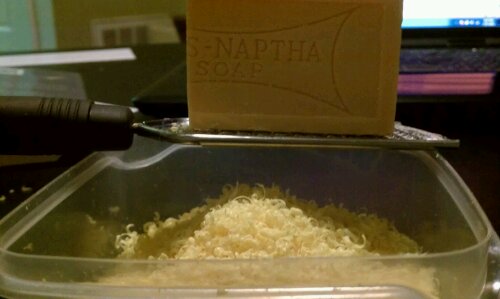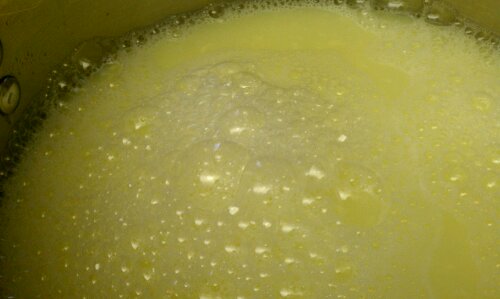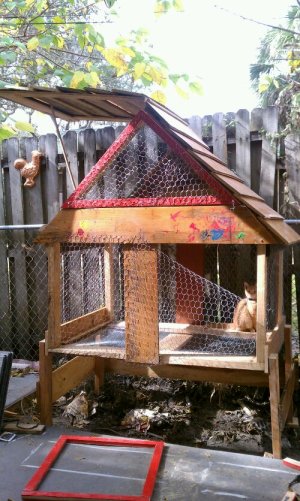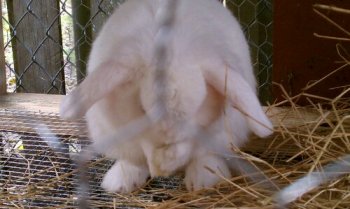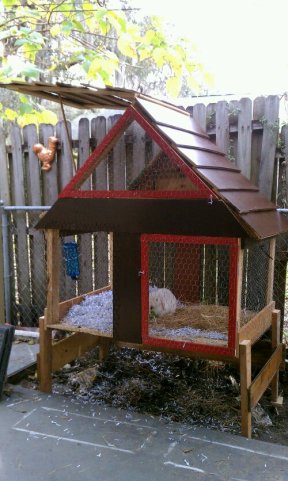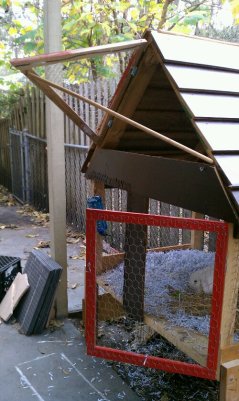 I browsed through this book by Sandor Ellix Kaltz about using wild yeasts to ferment everything from fruit to bread to…lots of other things. The very simple recipe for T’ej (Ethiopian style mead) in the book was the basis for my first fermentation experiment. Nate and I tasted the fizzy drink yesterday and decided that it’s definitely not done, definitely doesn’t have hardly any alcohol in it, but tastes like honey soda and something happened since it was funneled into Cole B.’s graciously loaned out carboy.
I browsed through this book by Sandor Ellix Kaltz about using wild yeasts to ferment everything from fruit to bread to…lots of other things. The very simple recipe for T’ej (Ethiopian style mead) in the book was the basis for my first fermentation experiment. Nate and I tasted the fizzy drink yesterday and decided that it’s definitely not done, definitely doesn’t have hardly any alcohol in it, but tastes like honey soda and something happened since it was funneled into Cole B.’s graciously loaned out carboy.
Since we love mead and have been really loving the South Tampa farm, we obtained a few carboys from the local Southern Brewing supply store and a mead, cider, and sake yeast (the wild yeast worked, but we were impatient and decided to go with a corporatized yeast strand) from Wyeast.
In the 3 gallon batch we used the following:
1 large sweet lemon (a Bird Box good)
3-4 cups of Kaleisia‘s Raindrop Green Tea (our favorite of their teas)
12 cups of raw, unheated, unfiltered honey from the South Tampa Farm
22 cups of warm water
1/2 packet of yeast (it was enough to make 6 gallons)

L to R: Large batch, plain mead, cider, wild mead
We food processed the lemon, rinds and all, and mixed it with the freshly brewed tea into the bottom of a clean 5 gallon bucket (sanitized beforehand and made of food grade plastic). We measured out the honey – I insisted on measuring rather than eyeballing and we just made a pot of tea for us to drink after to get the remaining honey out of the measuring cup – and Nate whisked it all together while I poured the honey in so the honey would dissolve evenly. The yeast is supposed to either be activated and let sit for 3 hours so you can watch the packet swell to prove it’s good yeast, or come to room temperature – we are dumb and activated it, but only waited about an hour. All that did was make for slight paranoia from Nate about whether it would work since it didn’t start to bubble right after we put the yeast in. We waited about an hour so the mix could cool, strained/funneled it into the carboy and then poured the yeast in.
The other half of the yeast packet went toward a 1 gallon carboy of cider, and a plain 1 gallon carboy of mead (just 4 cups of honey and warm water). Nate wanted to put yeast into the T’ej bottle, but since it started as a wild yeast experiment, I decided we should keep it that way.
And for your reading pleasure, a recipe of mead (meathe in Old English) from the 17th century book From the Closet of Sir Kenelm Digby Knight Opened. Sir Digby’s recipe is a fun read, and maybe one that would be worth trying in the future.
A copy of the book this excerpt is from can be downloaded here: gutenberg.org
Just look up digby as an author.
To Make Excellent Meathe
To every quart of Honey, take four quarts of water. Put your water in a clean Kettle over the fire, and with a stick take the just measure, how high the water cometh, making a notch, where the superficies toucheth the stick. As soon as the water is warm, put in your Honey, and let it boil, skimming it always, till it be very clean; Then put to every Gallon of water, one pound of the best Blew-raisins of the Sun, first clean picked from the stalks, and clean washed. Let them remain in the boiling Liquor, till they be thoroughly swollen and soft; Then take them out, and put them into a Hair-bag, and strain all the juice and pulp and substance form them into an Apothecaries Press; which put back into your liquor, and let it boil, till it be consumed just to the notch you took at first, for the measure of your water alone. Then let your Liquor run through a Hair-strainer into an empty Wooden-fat, which must stand wnedwise, with the head of the upper-end out; and there let it remain till the next day, that the liquor be quite cold. Then Tun it up into a good Barrel, not filled quite full, but within three or four fingers breadth; (where Sack hath been, is the best) and let the bung remain open for six weeks with a double bolter-cloth lying upon it, to keep out any foulness from falling in. Then stop it up close, and drink not of it till after nine months.
This Meathe is singularly good for a Consumption, Stone, Gravel, Weak-sight, and many more things. A Chief Burgomaster of Antwerpe, used for many years to drink no other drink but this; at Meals and all times, even for pledging of healths. And though He were an old man, he was of an extraordinary vigor every way, and had every year a Child, had always a great appetite, and good digestion; and yet was not fat.”
I wonder if by Blew-raisins he actually means raisins or if he means grapes or blueberries. Anybody familiar with the usage in the 17th century of that phrase?






 I browsed through this book by Sandor Ellix Kaltz about using wild yeasts to ferment everything from fruit to bread to…lots of other things. The very simple recipe for T’ej (Ethiopian style mead) in the book was the basis for my first fermentation experiment. Nate and I tasted the fizzy drink yesterday and decided that it’s definitely not done, definitely doesn’t have hardly any alcohol in it, but tastes like honey soda and something happened since it was funneled into Cole B.’s graciously loaned out carboy.
I browsed through this book by Sandor Ellix Kaltz about using wild yeasts to ferment everything from fruit to bread to…lots of other things. The very simple recipe for T’ej (Ethiopian style mead) in the book was the basis for my first fermentation experiment. Nate and I tasted the fizzy drink yesterday and decided that it’s definitely not done, definitely doesn’t have hardly any alcohol in it, but tastes like honey soda and something happened since it was funneled into Cole B.’s graciously loaned out carboy.

